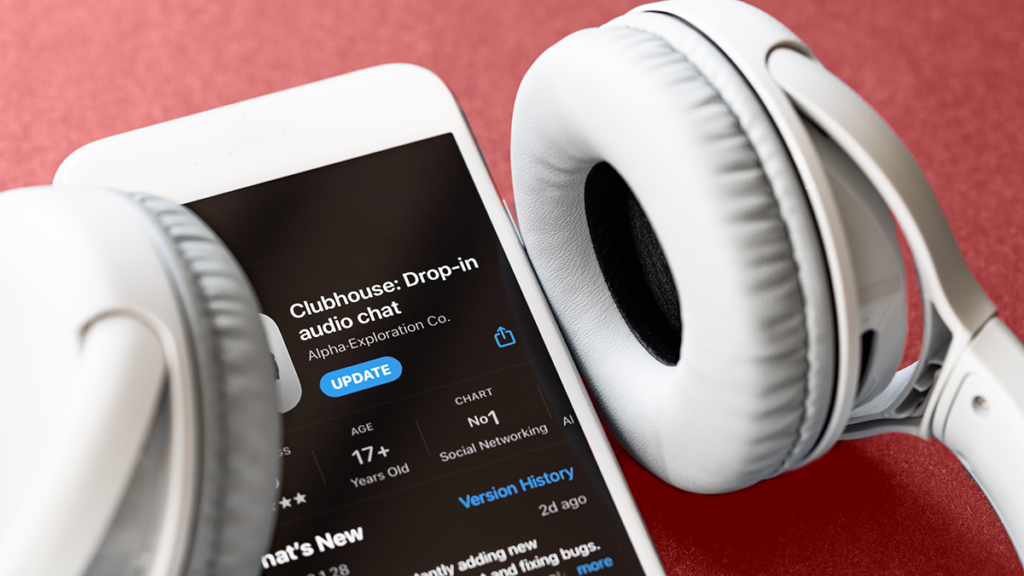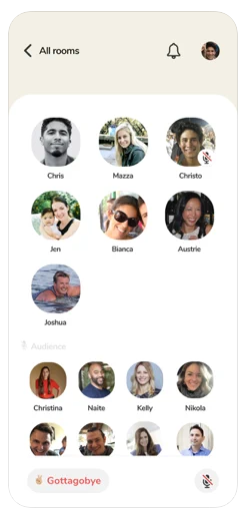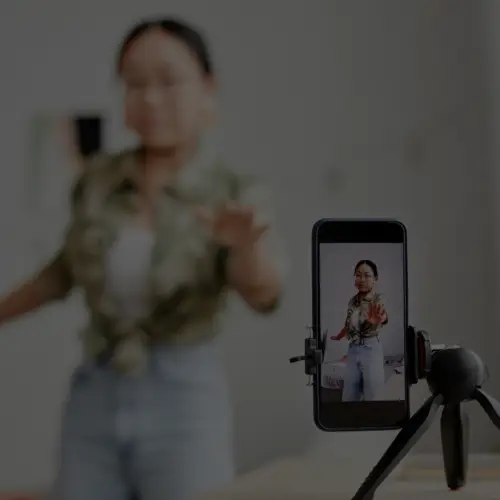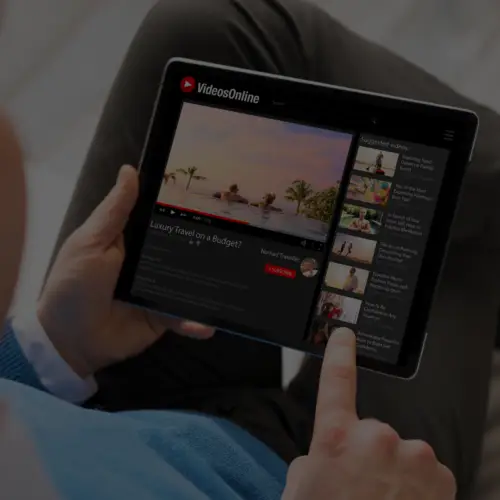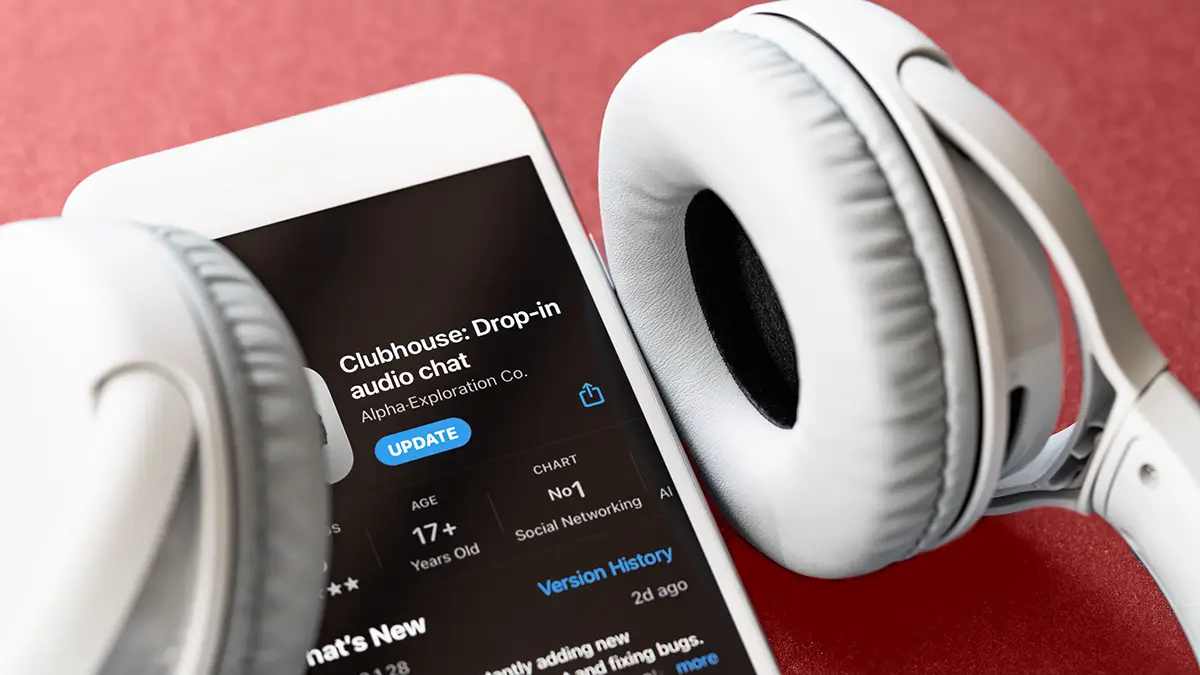
04 Mar Should Your Brand Be on Clubhouse?
Social audio could become the future of social media marketing as apps like Clubhouse continue to gain popularity.
“Social Audio is the fastest growing communication trend as users are finding that video meetings are too taxing, and text messaging lacks emotion and context. Audio is the ‘Goldilocks’ medium for today’s changing world. The rapid adoption will continue forward in coming years,” says Jeremiah Owyang, an Industry Analyst & Founder Partner at Kaleido Insights.
Although still an invitation-only platform, Clubhouse’s newfound success has everybody talking about the app. If you’re wondering if your brand should be developing a presence, here’s what you need to know about the network’s functionality as well as possible opportunities and challenges you may face.
What is Clubhouse?
Clubhouse is an audio-only social media app. Users can create or join Clubs (like groups or communities) or rooms where speakers can discuss whatever the host decides to allow. Rooms in Clubhouse are a bit like a panel at a convention; the host can invite people to come up to a virtual stage and those people can take turns talking. Those who don’t have speaking permissions listen to the conversation just as you would listen to the panel at a physical convention. In small rooms, hosts can allow everyone to talk.
There are also three different types of rooms worth noting:
- Open Rooms: Anyone can join
- Closed Room: Invitation-only
- Social Rooms: Only people you follow can join the room
Unlike most social media, content on Clubhouse isn’t permanent. By default, the audio isn’t recorded, so nothing is left over from a room after the conversation ends. You can, of course, schedule your rooms in advance to match up with the schedules of the participants and to build up interest for an audience. There’s also the capability of adding Clubs and events to your calendar, which will likely be a helpful tool.
Who is Using Clubhouse?
Celebrities have been some of the biggest draws to the app. Comedians Kevin Hart and Chris Rock were early adopters of the platform and frequently host conversations on the app. But Clubhouse isn’t just about hanging with your favorite celebrities. Businessmen such as Elon Musk and Mark Zuckerberg are also members. Clubhouse rooms play host to experts across a wide variety of fields discussing topics of interest.
As Clubhouse moves closer to its public launch and away from the invite-only model, it continues to amass lots of users. As of February 2021, there were over 10 million weekly active users on the app.
What are People’s Reactions to Clubhouse?
Like most new products or services, reactions to Clubhouse have been mixed. Many who see the lack of moderation and fact checking on sites such as Twitter or Facebook to be a problem are alarmed that the temporary nature of Clubhouse conversations exacerbates that problem. Others have pointed out that Clubhouse is no different from any other private gathering and that not every aspect of our lives need to be a matter of public record. It’s true enough that hustlers are going to be hustlers on any public platform. Like the internet as a whole, it’s up to the user to determine which sources to trust and which not to trust.
To many users, the audio only aspect is the perfect balance. Text only social media feels too impersonal and can often result in more abrasive conversation than face to face conversation would. Video chats, on the other hand, can feel too personal. People are self-conscious about showing their faces to a bunch of strangers. Those users find the happy middle ground of audio and the temporary nature of Clubhouse to be a freeing experience that allows for more open conversation.
What Brands are on Clubhouse?
Recently, the Kool-Aid Man made quite a splash when he announced on Twitter that he’d joined Clubhouse. As one may expect, the brand’s mascot was limited to shouting “Oh yeah!” at appropriate times during the conversation, but no doubt added levity to the room and certainly got people talking about Kool-Aid, which is the goal of any brand manager.
Pizza upstart Slice mediated a Valentine’s day dating competition on the app, giving a free pizza to anyone who failed to win a date. Martell Cognac partnered with content creator Karen Civil to celebrate black entrepreneurs during Black History Month. Other brands to make the move onto Clubhouse include Milk Bar, Politico, and fast food parent company Restaurant Brands International.
What Opportunities are there for Brands?
Clubhouse isn’t like some other social media sites. Direct promotion is going to be a bit harder, as the whole point of the network is having real and meaningful conversations. Brands are going to need to find a way to leverage that difference and work within those constraints if they are going to be successful on the platform. Here are some ideas to align the goals of the platform with your goals as a brand.
- Leverage FOMO: “Fear of Missing Out” has long been an important driver of human action. Events hosted in Clubhouse rooms aren’t like a YouTube livestream. Interested parties can’t just watch it on replay whenever they want. The downside to that is that you limit your overall audience, but the upshot is that you can play off FOMO to increase the size of the live one.
- Join Conversations: Clubhouse is all about sharing expertise and telling stories. If you can find a room that aligns with your company’s skill set, joining that room and putting your knowledge on display is a great way to get your company name out there. There will likely be similar opportunities to simply tell your brand’s story and get your name out that way.
- Sponsor a Room: This is essentially what Slice was doing when they gave away free pizzas. Sponsorships are a tried and true method of building brand awareness that should translate well into the Clubhouse world.
- Episodic Content: With regular Clubhouse rooms discussing topics of importance to your brand, the app becomes very much like a podcasting platform, and carries with it all the same benefits.
- Influencer Partnerships: Martell Cognac’s partnership with Karen Civil is a perfect example of how brands can work with an influencer to become part of a broader conversation.
What Challenges are there for Brands?
As Clubhouse goes through the growing pain inherent to any new upstart, brands looking to capitalize on the platform have to as well. Since its start, the app was only available on iOS devices. That will be changing soon as Clubhouse has hired an Android developer to begin the process of bringing it to that platform as well. Similarly, the network has been available by invitation only since it launched. Limiting the number of users is important for the developers to iron out kinks and refine user experiences. Soon, however, Clubhouse will lift those restrictions and make their platform available to everyone.
There are still a lot of unknowns when it comes to using Clubhouse for your brand. How will the slow-moving moderation play out when you are trying to ensure your brand’s room is a welcoming one for everybody? The live-only nature of the app means you’ll have to host your content when the most ears will be able to hear it. Figuring out when most people are on will be an important part of any effort to gain exposure through Clubhouse rooms, and may be a shifting target as the user base expands.
In a world of data-driven social media marketing efforts, platform analytics are critical to help measure the success of marketing initiatives. That said, at this time Clubhouse doesn’t have any analytics available and therefor no means of measurement. While this will likely change in the future, it’s still a limiting feature for those trying to test out of the platform is right for their brand.
Having seen the success of Clubhouse, even at these early stages, Facebook has decided they want in on the action as well. Will the social media giant throwing its weight around be able to topple Clubhouse before it even gets going strong? For now, it may be worth it for brands to take the lead of the Kool-Aid Man and at least dip their toes into Clubhouse. It’s a good way to make your company a part of the conversation and showcase the talents that your brand brings to the table. Whether it remains that way, remains to be seen.
For more information on Clubhouse developments, the future of social audio, or just social media marketing in general, subscribe to our bi-weekly newsletter below!
Subscribe to Social You Should Know


